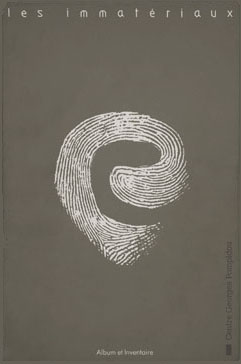Bernhard Leitner: P.U.L.S.E.: Spaces in Time / Räume der Zeit (2008) [English/German]
Filed under book | Tags: · architecture, art, installation art, sculpture, sound, sound art, space

Bernhard Leitner (*1938) is an artist widely known for his sound sculptures and sound installations. P.U.L.S.E. documents a range of his works made between 1999 and 2008.
“Sound spaces are not simply spaces in which sounds can be heard, but rather, where sounds first create the space, shaping its special characteristics. Audio events can create not only a special experience of the external, surrounding space, they can also make it possible to experience physical space as ‘internal’ space. Leitner’s work leads to acoustic qualities (of space) that remain hidden in the stream of stimuli, and it shows us opportunities for sensuous experience that we are barely aware of, since they have been lost or because their potential has remained unrecognized.” (Cathrin Pichler)
Texts by Boris Groys, Detlef B. Linke, Peter Weibel, conversation with the artist by Stefan Fricke.
Publisher Hatje Cantz, Ostfildern, 2008
A ZKM Book
ISBN 9783775720472
208 pages
PDF (from the author)
Comment (0)The Iron Ring, an Art Project by Cecilia Jonsson (2014)
Filed under brochure | Tags: · art, environment, installation art, metallurgy, mineralogy, mining, plants
While “green mining” aims for a more ecological approach to mining metals, The Iron Ring explores how contaminated mining grounds may benefit from the mining of metals. For this work, 24kg of iron-tainted grass was removed from contaminated mining grounds and transformed into a ring of 2g metallic iron.
The project elaborates on the possibilities to utilize the cleansing process of the naturalized, wild growing grass: Imperata cylindrica. An invasive vile weed, which overlooked tolerance and ability to hyper accumulate iron inside its roots, stems and leaves are left unutilized. The Iron Ring proposes to harvest the grass for the purpose of extracting the ore that is inside them. The result is a scenario for iron mining that, instead of furthering destruction, could actually contribute to the environmental rehabilitation of abandoned metal mines.
The Iron Ring came about through trials and failures, in a process of close collaboration with smiths, scientists, technicians and farmers met along the way.
This e-book consists of two parts. The first is a visual essay by Cecilia Jonsson that reports on the seven chronological steps that were required to create an iron ring out of 24kg of grass harvested from the acidic river banks of a landscape in Spain severely transformed by opencast mining. In the second part, professor James Jackson Griffith, who participated in Jonsson’s preliminary research on mining restoration in Brazil, discusses The Iron Ring from an environmental-philosophical perspective.
Publisher V2_, Rotterdam, 2014
Open Access
PDF (4 MB, EPUB)
Comment (0)Les Immatériaux: Épreuves d’écriture & Album et Inventaire (1985) [French]
Filed under catalogue | Tags: · architecture, art, cinema, code, computer art, design, industrial design, installation art, kinetic art, language, machine, painting, photography, robotics, sculpture, simulation, writing

“Les Immatériaux was a landmark exhibition co-curated in 1985 for the Centre Georges Pompidou in Paris by philosopher Jean-François Lyotard and design historian and theorist Thierry Chaput, attracting more than 200,000 visitors during the 15 weeks of its duration.
The exhibition brought together a striking variety of objects, ranging from the latest industrial robots and personal computers, to holograms, interactive sound installations, and 3D cinema, along with paintings, photographs and sculptures (the latter ranging from an Ancient Egyptian low-relief to works by Dan Graham, Joseph Kosuth and Giovanni Anselmo). The Centre de Création Industrielle (CCI) – the more ‘sociological’ entity devoted to architecture and design within the Centre Pompidou, which initiated Les Immatériaux – had been planning an exhibition on new industrial materials since at least 1982. Variously titled Création et matériaux nouveaux, Matériau et création, Matériaux nouveaux et création, and, in its last form, La Matière dans tous ses états, this exhibition, first scheduled to take place in 1984, already contained many of the innovative features that found their way into Les Immatériaux.
These features included an emphasis on language as matter, the immateriality of advanced technological materials (from textiles to plastics and holography), exhibits devoted to recent technological developments in food, architecture, music and video, and an experimental catalogue produced using computers. The earlier versions of the exhibition also involved many of the future protagonists of Les Immatériaux, such as Jean-Louis Boissier (among several other faculty members of Université Paris VIII, where Lyotard was teaching at the time) and Eve Ritscher (a London-based consultant on holography). Furthermore, Les Immatériaux benefited from projects pursued concurrently by other groups within the Pompidou which joined Lyotard’s and Chaput’s project when it was discovered that their themes overlapped. Thus, an exhibition project on music videos initiated by the Musée national d’art moderne and a project on electro-acoustic music developed by IRCAM (Institut de Recherche et de Coordination Acoustique/Musique) were incorporated into it.” (from a study by Anthony Hudek, 2009, edited)
Volume 1 contains an experimental glossary of 50 terms with contributions by twenty-six authors, writers, scientists, artists and philosophers including Nanni Balestrini, Michel Butor, François Châtelet, Jacques Derrida, Bruno Latour and Isabelle Stengers. Volume 2 reproduces the works exhibited.
Publisher Centre Georges Pompidou, Paris, March 1985
ISBN 2858502994 (I), 2858503001 (II)
263 (I) and 142 (nonpaginated A4) pages (II)
Épreuves d’écriture (Volume 1, 11 MB, added on 2014-7-30 via Norkhat)
Album et Inventaire (Volume 2, 103 MB, via Arts des nouveaux médias blog of Jean-Louis Boissier)
See also other documents and literature about the exhibition (Monoskop wiki).

